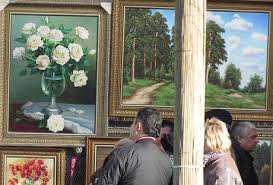graduates
RUSSIAN ACADEMY OF ART OF ST. PETERSBURG (part 2)
 Under Catherine II, in 1764, a new detailed Charter of the Imperial Academy of Arts was adopted, and the close sovereign Ivan Ivanovich Betskoy became president. The Empress wrote: “For better encouragement and success, We, having taken this Academy into Our patronage … determine it to be under our sole Imperial jurisdiction, providing it with the amount necessary for its maintenance.” In the early period of the reign of Catherine II, a kind of “state utopia” of enlightened Russia arose, and the Academy of Arts had to play an important role in creating a visible image of the transformed empire.
Under Catherine II, in 1764, a new detailed Charter of the Imperial Academy of Arts was adopted, and the close sovereign Ivan Ivanovich Betskoy became president. The Empress wrote: “For better encouragement and success, We, having taken this Academy into Our patronage … determine it to be under our sole Imperial jurisdiction, providing it with the amount necessary for its maintenance.” In the early period of the reign of Catherine II, a kind of “state utopia” of enlightened Russia arose, and the Academy of Arts had to play an important role in creating a visible image of the transformed empire.
Catherine II described her reign in a letter to her permanent correspondent, ambassador of the tiny German state of Saxe-Goth in Paris, Baron Melchior Grimm, ironically alluding to one of La Fontaine’s fables and, in addition Continue reading



